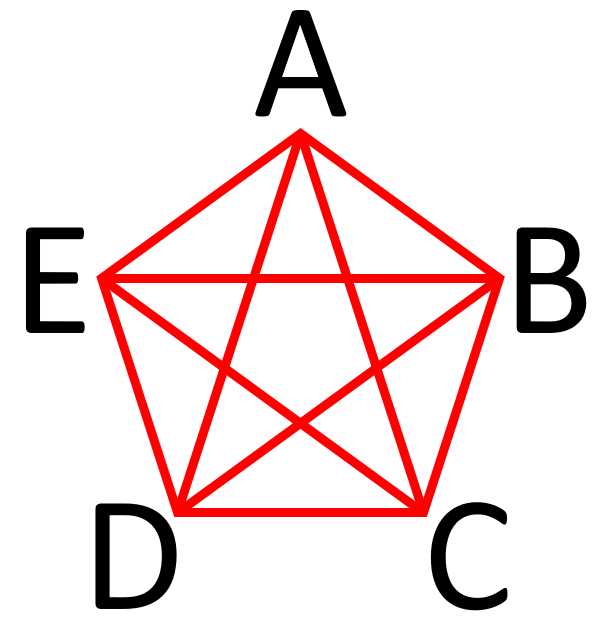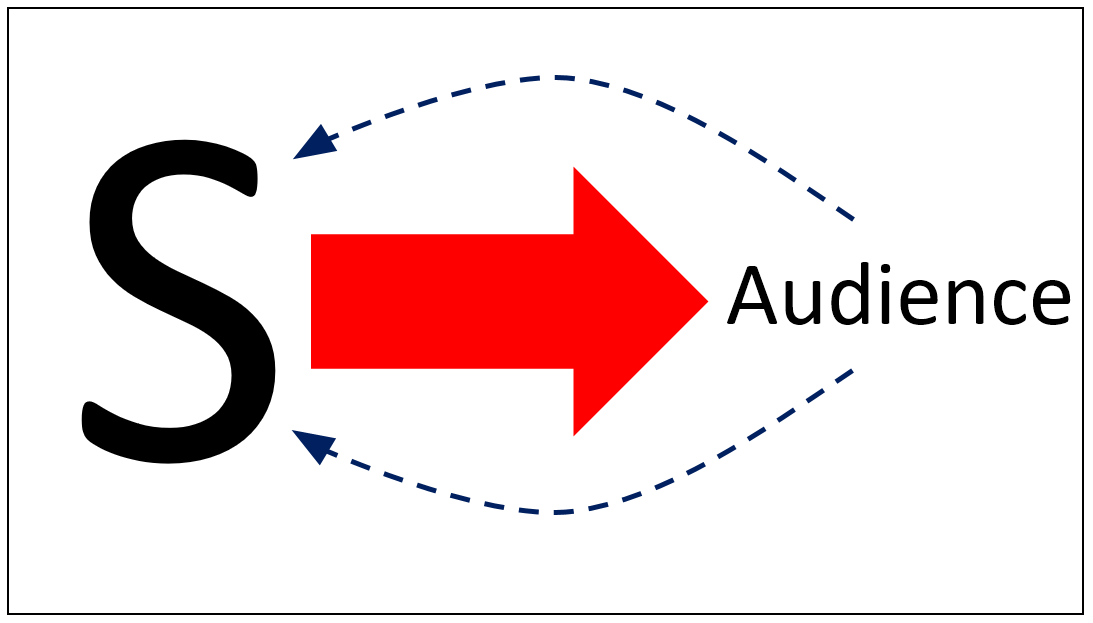Chapter 1: Introduction to Human Communication
1/73
Earn XP
Description and Tags
Main Topics: Oral and Aural Communication, Four Communication Settings, Transactional Theory of Communication, Purposes of Communication, Characteristics of Communication, Sender-Based vs. Receiver-Based Communication
Name | Mastery | Learn | Test | Matching | Spaced |
|---|
No study sessions yet.
74 Terms
oral communication
speaking
aural communication
listening
uses of communication
to interact with those around us, to build relationships, to satisfy our own personal needs, to exchange information, to persuade others, and to work collaboratively in groups
hard skills
specific to our fields
soft skills
apply across the board and enhance our ability to work with others in a range of settings
settings of communication studies
Interpersonal Communication, Small Group Communication, Intercultural Communication, Public Speaking, Computer-Mediated Communication, Mass Media
interpersonal communication
everyday communication/exchange between two or more people to create shared meanings, achieve social goals, manage personal identities and carry out relationships
fundamental drive of communication
reduce uncertainty
stimulus-response
All other animals live in a world of stimulus-response. They react instinctively to whatever is around them at the moment.
stimulus-thought-response
Humans sense the world around us, we think about it, we talk about it, and finally we respond to it. We respond to thought more than stimulus with abstract thoughts and mental images.
what theory of General Semantics says about communication
we have limits as to what we can experience through our senses
we can never experience “all” of what is “out there” to experience
have both automatic reactions and controlled reactions to stimuli
key tool through communication
The key survival tool we use to manage and respond to the world around us. By connecting with other humans, we can test and assess our perceptions, our thoughts about the stimuli, to determine if our responses to those thoughts are reasonable.
goal of interpersonal communication
reduce uncertainty by fulfilling our interpersonal needs for belongingness and acceptance
belongingness
our need to feel we fit in and belong to a group of some sort
reference group
a collection of individuals with whom acceptance is extremely important
spend a lot of time with them
strongly driven to feel we belong to that group
it gives us a place to fit in and feel valued
acceptance
look for those who accept and understand who we are
accept our traits, both positive and negative, not our successes and failures
underlying relationship remains despite disagreements
response in new place
most of us will deliberately try to connect with someone to fulfill acceptance and belonging needs, at least temporarily
model of interpersonal communication

Both people are relatively equal (same size and value); relatively balanced speaking and listening back and forth
small group communication
several among several
goal of small group communication
task completion
when small group communication is effective:
interpersonal needs are met; there is a sense of acceptance and belongingness among members
model of small group communication

task group of 5 people of equal value and worth, all members participating equally with other group members
realistically, participation will not always be equal but model shows ideal situation
public speaking
one to many (not with/among but to)
not mutual exchange but unidirectional
role of speaker in public speaking
majority of message from speaker
in charge of creation, sending and substance of message
speaker has more responsibility for success of communication event
role of audience in public speaking
attending to the message; decoding; interpreting; asking questions
offer feedback: subtle (facial expressions) to overt (laughter, questions, applause)
speaker uses feedback to gauge how event is going
goal of public speaking
transmit information: speaker shares idea/information/position with group
model for public speaking

speaker larger than audience as primary source for communication
large arrow referencing greater unidirectionality of communication
dotted arrows show feedback from audience
computer-mediated communication (CMC)
communication occurring through the use of computer technologies
cell phones, texting, email, social media (like Facebook, Twitter, and Instagram), discussion boards, and video conferencing
benefits of CMC
easier connection with other people
stay connected with friends and family
collaboration abilities with people in different places
affect social change: find and connect with those sharing concerns and passions
drawbacks of CMC
decreasing attention spans
used to short messages instead of well-developed and thoughtful discourse
difficulty to manage boredom
less face-to-face interaction, increased isolation
weaker development of small talk
benefit of understanding communication
more capable of diagnosing communication problems, and more equipped to identify and employ solutions to those problems for effective communication
definition of communication
the transactional process of using symbolic language to stimulate shared meaning
types of processes

linear and circular (past), transactional (current)
linear model
sender sends message to receiver
receiver processes message for understanding
only shows one direction
does not account for fact that many messages come in forms of responses
does not allow for/describe relationship of one message to another
circular model
sender sends message to receiver
receiver sends message back to sender as feedback
sender becomes receiver and vice versa
accounts for related messages
falsely assumes all messages have a causal relationship
many messages are independent of what was just experienced
transactional model of communication
multiple messages flowing simultaneously between people
some messages are independent and some are causal (feedback)
we sort out types of messages during interactions
task-shifting
we are capable of receiving, decoding, and responding to another person’s behavior, while at the same time that other person is receiving and responding to ours
communication is a process
an event comprised of many parts working together and depending on each other
if a part of communication fails, whole process is affected
symbolic language
set of sounds or shapes to which we attach meaning
shapes and sounds symbolize objects or concepts
issue with symbolic language
we each see language in our own individual way
the meanings we attach may be similar, but often those meanings can be dramatically different
greater chance of miscommunication when using abstract over concrete language
stimulate shared meaning
goal of communication process: what the speaker intends by message and how the receiver interprets the message are highly similar
we cannot directly transfer meaning; must use interpretive process to attempt to stimulate meaning
stages of interpretive process to stimulate shared meaning
We select symbols that have a certain meaning for us based on our life experience.
We translate them into sounds and shapes.
We send them to the receiver.
The receiver sees or hears the shapes and sounds.
The receiver determines what discrete symbols they have seen or heard.
The receiver attaches meaning to those symbols based on their life experiences.
Multiple stages offer opportunity for misunderstanding
mutual responsibility
in communication, all participants have some responsibility for the success or failure of the communication
general role of speaker
speaker must send clear, organized, understandable message
general role of listener
must attend to message, interpret it, respond, and ask for clarification if not understanding
abstracting
creating mental images and symbols of the external world
we use communication to make sense of the world around us
communication used to develop, categorize, and modify perceptions of the world
abstracting/language allows us to talk, think, and generally manipulate our internal world to enhance understanding
intrapersonal communication (internal images) tested, verified, and modified through interpersonal communication
sharing perceptions of the world with others maintains that our view is realistic and valid
we use communication to maintain a healthy sense of self
as social creatures we need acceptance and belonging to feel we fit in and have worth
gives a sense of how others see and value us
self-worth validated and supported from others
acceptance sought from reference groups
we use communication to bind us socially
builds relationships and sense of society
relationship defined by type of communication
maintains connection with others
facilitated by scripts
script
socially prescribed topics and dialogues for casual, socially necessary communication
few simple phrases to fulfill obligation to acknowledge others, demonstrate other-value
once script is played out, conversation can branch out, or script is exhausted and conversation dies
even if conversation ends script is harmless and acceptable
we use communication to share information and to persuade others
communicate to share/access global knowledge base
time-binding: knowledge accumulates over years through records and documentation, expanding rapidly
persuasion: can influence each other
persuasion in society
economic culture (advertising)
political culture (stances, voting, influence policy)
influence worldwide events
interpersonal persuasion
everyday imposing wants/thoughts onto others to see the world the same as we do
imposing viewpoint: choice for dinner, whether song/show is good
intrapersonal persuasion
self-persuasion
weight options and making decisions in act of debating oneself to follow best course of action
communication success is:
rare: so complex with so many components
always many inhibitors for success and opportunities for miscommunication
must listen carefully, speak clearly, take time for understanding
communication occurs:
verbally and nonverbally
communication package
anything about us that has communication value: verbal + nonverbal
verbal communication
language: words, meaning, syntax, grammar
7% of package
nonverbal communication
non-language variables: vocal traits, gestures, posture
93% of package
true expression of emotional state
communication is:
continuous: always communicating something whether verbal or nonverbal, blend of intentional or unintentional messages, even through silence/absence
intentional messages
sent deliberately and purposefully
unintentional messages
those the sender is unaware of sending; unconscious
communication has:
ethical implications: how we choose to communicate/present information has ethical considerations
choosing between right and wrong, being truthful and fair, respectful, responsible
unethical communication threatens quality of communication and well-being of individuals/society
ethics
set of standards to which we hold ourselves and others accountable
some communication choices are inconsistent with an ethical approach
communication is culturally:
specific: language varies from culture to culture
different languages, dialects/pronunciation of same language
nonverbal communication differs
co-culture
identifiable group with their own unique traits operating within the larger culture
English language across US
communication reflects:
personality: make assumptions about personality by their communication; part of how we perceive others
assumptions help make quick decisions and reduce uncertainty as long as it’s not extreme (stereotyping)
egocentric
assuming others think, use language, and generally see the world as we do
sender-based communication
sender acts egocentrically
assumes they always communicate properly for everyone, and any failures are receiver’s fault
does not adapt or change because they believe they are correct
sender-based listener
assumes they interpret message as intended and does not think they might misinterpret or misunderstand
receiver-based communication
sender considers receiver to adapt to diversity more effectively
acts in provisional manner: assuming they need to consider how to communicate specific message in the best way to specific receiver
knows interpretation will vary; what works for one won’t work for everyone
provisionalism
everyone initially thinks egocentrically, but then they take a step back and ask if their message is sent appropriately for audience/or their interpretation is what the speaker intended
receiver-based listener
considers if interpreted message is how the speaker intended
works to offset misunderstandings/misinterpretations
self-reflexive communication
ultimate goal: thoughtfully making choices about each situation and choosing most appropriate communication to increase chance of success; adaptable to receiver